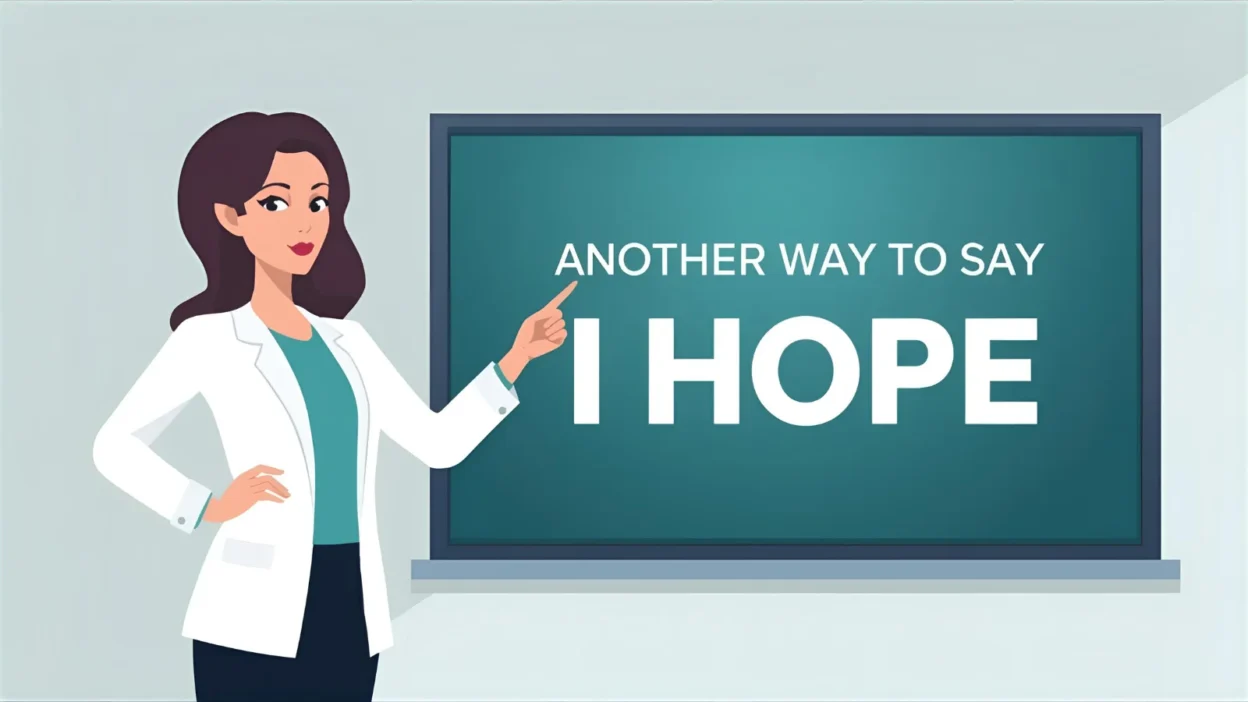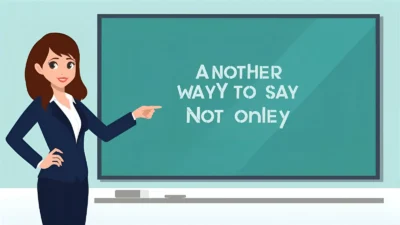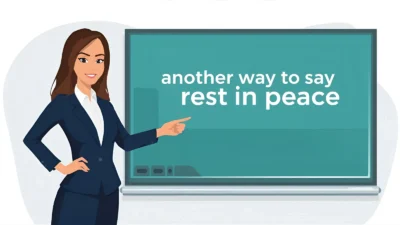The phrase “I hope” is a warm and versatile expression used to show optimism, care, or anticipation. It appears in personal, academic, and professional contexts alike — for instance:
While friendly and genuine, “I hope” can sound repetitive or overly casual when used frequently—especially in emails or formal writing. Luckily, there are many refined and natural alternatives that express similar meaning, depending on the tone and context.
Below are 37 thoughtful alternatives to “I hope” with explanations, examples, and tone suggestions.
1. I trust
Meaning: Expresses confidence or assurance rather than simple hope.
Explanation: More professional than “I hope,” especially in emails.
Example: I trust this message finds you well.
Best Use: Formal communication, business correspondence.
Tone: Polite, professional.
2. I wish
Meaning: Expresses goodwill or desire for something positive.
Explanation: Softer and more emotional than “I hope.”
Example: I wish you a wonderful weekend.
Best Use: Personal messages, warm tone.
Tone: Kind, sincere.
3. I look forward to
Meaning: Shows anticipation and optimism about a future event.
Explanation: Polished and professional substitute.
Example: I look forward to hearing from you soon.
Best Use: Formal and semi-formal emails.
Tone: Confident, courteous.
4. I’m confident that
Meaning: Conveys strong belief or assurance.
Explanation: Ideal for assertive or motivational writing.
Example: I’m confident that your presentation will go well.
Best Use: Encouraging, professional tone.
Tone: Positive, supportive.
5. Hopefully
Meaning: Brief and neutral way to express hope.
Explanation: Works well in informal writing or speech.
Example: Hopefully, the project will be completed on time.
Best Use: Conversational or casual contexts.
Tone: Light, friendly.
6. I’m optimistic that
Meaning: Indicates a strong belief in a positive outcome.
Explanation: Great for formal reports or motivational statements.
Example: I’m optimistic that the new strategy will yield great results.
Best Use: Professional, goal-oriented tone.
Tone: Upbeat, confident.
7. I have faith that
Meaning: Expresses trust and belief in someone or something.
Explanation: Adds emotional warmth or encouragement.
Example: I have faith that everything will work out for the best.
Best Use: Supportive or reassuring messages.
Tone: Warm, compassionate.
8. It is my hope that
Meaning: Formal rephrasing of “I hope.”
Explanation: Excellent for speeches, academic, or official writing.
Example: It is my hope that we can continue this collaboration.
Best Use: Professional and ceremonial tone.
Tone: Formal, respectful.
9. I’m hoping
Meaning: A more casual or ongoing expression of hope.
Explanation: Sounds natural in everyday communication.
Example: I’m hoping you can join us for dinner tomorrow.
Best Use: Friendly, conversational tone.
Tone: Relaxed, genuine.
10. I expect
Meaning: Implies a reasonable belief rather than a wish.
Explanation: Works in formal contexts where confidence is warranted.
Example: I expect the report to be ready by Monday.
Best Use: Business or academic tone.
Tone: Assertive, confident.
11. My wish is that
Meaning: Conveys sincerity and emotional depth.
Explanation: Slightly poetic and personal.
Example: My wish is that you find peace and happiness.
Best Use: Personal letters, speeches.
Tone: Heartfelt, expressive.
12. I’m eager to
Meaning: Focuses on anticipation and enthusiasm.
Explanation: Great for showing active interest rather than passive hope.
Example: I’m eager to learn more about your proposal.
Best Use: Emails, interviews, academic writing.
Tone: Positive, motivated.
13. I anticipate
Meaning: Suggests expectation based on likelihood or planning.
Explanation: More formal and predictive than “I hope.”
Example: I anticipate your feedback on the next draft.
Best Use: Professional or technical correspondence.
Tone: Formal, confident.
14. May you
Meaning: Expresses goodwill in a gentle, blessing-like tone.
Explanation: Elegant and traditional.
Example: May you have a successful week ahead.
Best Use: Formal letters, messages of goodwill.
Tone: Polite, graceful.
15. I’m praying that
Meaning: Indicates deep concern or empathy.
Explanation: Best used in personal or sympathetic messages.
Example: I’m praying that you recover quickly.
Best Use: Personal, emotional communication.
Tone: Compassionate, caring.
16. I’d like to see
Meaning: Expresses a constructive desire for a future outcome.
Explanation: Suitable for leadership or teamwork contexts.
Example: I’d like to see this initiative succeed.
Best Use: Professional settings.
Tone: Encouraging, confident.
17. I’m wishing you
Meaning: Combines warmth with formality.
Explanation: Ideal for greetings and closing lines.
Example: I’m wishing you continued success and happiness.
Best Use: Emails, cards, or well-wishes.
Tone: Friendly, polite.
18. It would be wonderful if
Meaning: Expresses a hopeful desire with warmth.
Explanation: Softer and more emotional.
Example: It would be wonderful if we could meet soon.
Best Use: Friendly professional or personal tone.
Tone: Gentle, kind.
19. I’d be delighted if
Meaning: Adds politeness and enthusiasm.
Explanation: Great for invitations or positive expectations.
Example: I’d be delighted if you could attend the event.
Best Use: Formal invitations, polite requests.
Tone: Warm, courteous.
20. Fingers crossed
Meaning: Informal phrase for wishing good luck.
Explanation: Best used in casual or friendly messages.
Example: Fingers crossed that everything goes smoothly!
Best Use: Conversational contexts.
Tone: Light-hearted, informal.
21. I’m anticipating that
Meaning: Expresses forward-looking optimism.
Explanation: Slightly formal and professional.
Example: I’m anticipating that this partnership will yield great outcomes.
Best Use: Professional writing.
Tone: Confident, positive.
22. I’d love to see
Meaning: Conveys personal enthusiasm and support.
Explanation: Ideal for motivating or encouraging others.
Example: I’d love to see you reach your full potential.
Best Use: Supportive or creative communication.
Tone: Encouraging, warm.
23. It would be great if
Meaning: Suggests a hopeful desire with a friendly tone.
Explanation: Common in informal speech or emails.
Example: It would be great if we could finalize the plan tomorrow.
Best Use: Conversational or semi-formal tone.
Tone: Approachable, positive.
24. I trust that
Meaning: Professional and polished way to replace “I hope.”
Explanation: Ideal for formal emails and correspondence.
Example: I trust that your week is off to a good start.
Best Use: Business, academic writing.
Tone: Formal, composed.
25. I’m certain that
Meaning: Expresses strong assurance rather than wishful thinking.
Explanation: Works when confidence is appropriate.
Example: I’m certain that you’ll do a great job on this project.
Best Use: Motivational or formal tone.
Tone: Supportive, confident.
Conclusion
The phrase “I hope” is simple and genuine, but using alternatives can make your communication more precise and engaging.
For formal or professional emails, use options like “I trust,” “I’m confident that,” or “It is my hope that.”
For friendly or personal tones, try “I wish,” “Hopefully,” or “It would be great if.”
Choosing the right alternative helps you express positivity and care—while keeping your writing fresh, intentional, and tone-appropriate.



